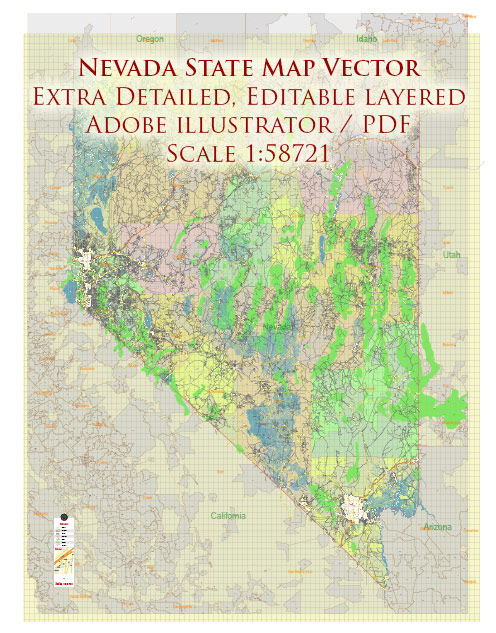Nevada, like many states, has a complex and varied system of water resources and bridges. Water resources are crucial for supporting the state’s population, agriculture, industry, and ecosystems. Bridges, on the other hand, are essential for transportation and connectivity throughout the state. Here’s an overview of water resources and bridges in Nevada:
Water Resources:
- Rivers and Lakes: Nevada is known for its arid climate, but it still has several important rivers and lakes. The Colorado River forms the state’s southeastern border and is a vital source of water for the southern part of the state, including Las Vegas. Lake Mead, the largest reservoir in the United States, is formed by the Hoover Dam on the Colorado River and provides water and hydroelectric power.
- Groundwater: Groundwater is a critical source of water in Nevada, especially in rural and remote areas. However, over-pumping and drought have raised concerns about the sustainability of groundwater resources.
- Desert Springs: Nevada is home to many desert springs, which provide valuable oases for wildlife and vegetation in the arid landscape. Protecting these fragile ecosystems is important for the state’s biodiversity.
- Water Management: Water management in Nevada is overseen by the Nevada Division of Water Resources, which administers water rights, regulates water use, and works to ensure the responsible management of water resources.
Bridges:
- Bridge Infrastructure: Nevada has an extensive network of bridges to support its transportation system. These bridges are found on highways, roads, and railroads, providing critical connections for people and goods.
- Notable Bridges: One of the most famous bridges in Nevada is the Hoover Dam Bypass Bridge, officially known as the Mike O’Callaghan-Pat Tillman Memorial Bridge. It spans the Colorado River just downstream from the Hoover Dam, providing a crucial transportation link and scenic overlook.
- Maintenance and Upkeep: Like many states, Nevada faces the challenge of maintaining and upgrading its aging bridge infrastructure. Ensuring the safety and functionality of bridges is an ongoing concern.
- Bridge Inspections: Regular bridge inspections are conducted to assess the condition of the state’s bridges. These inspections are essential to identify any structural issues and plan for necessary repairs or replacements.
Both water resources and bridges are critical elements of Nevada’s infrastructure and natural environment. Sustainable water management is essential in a state with a challenging climate, and well-maintained bridges are necessary for safe and efficient transportation throughout the state. State and local authorities work together to manage and maintain these resources and structures to support Nevada’s economy and quality of life.


 Author: Kirill Shrayber, Ph.D.
Author: Kirill Shrayber, Ph.D.